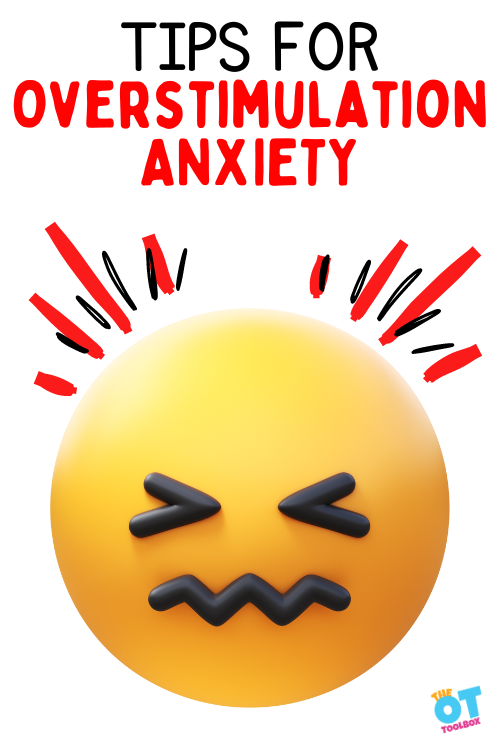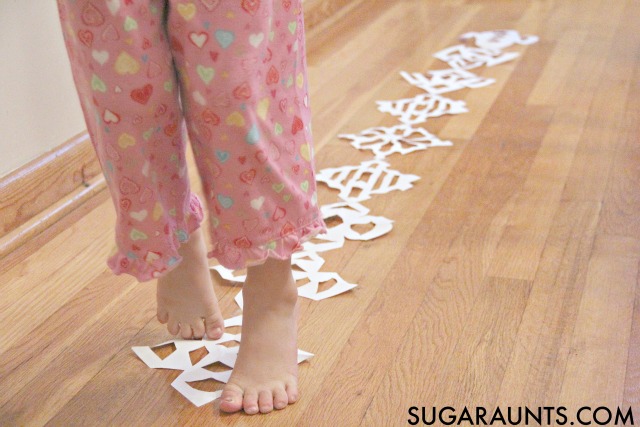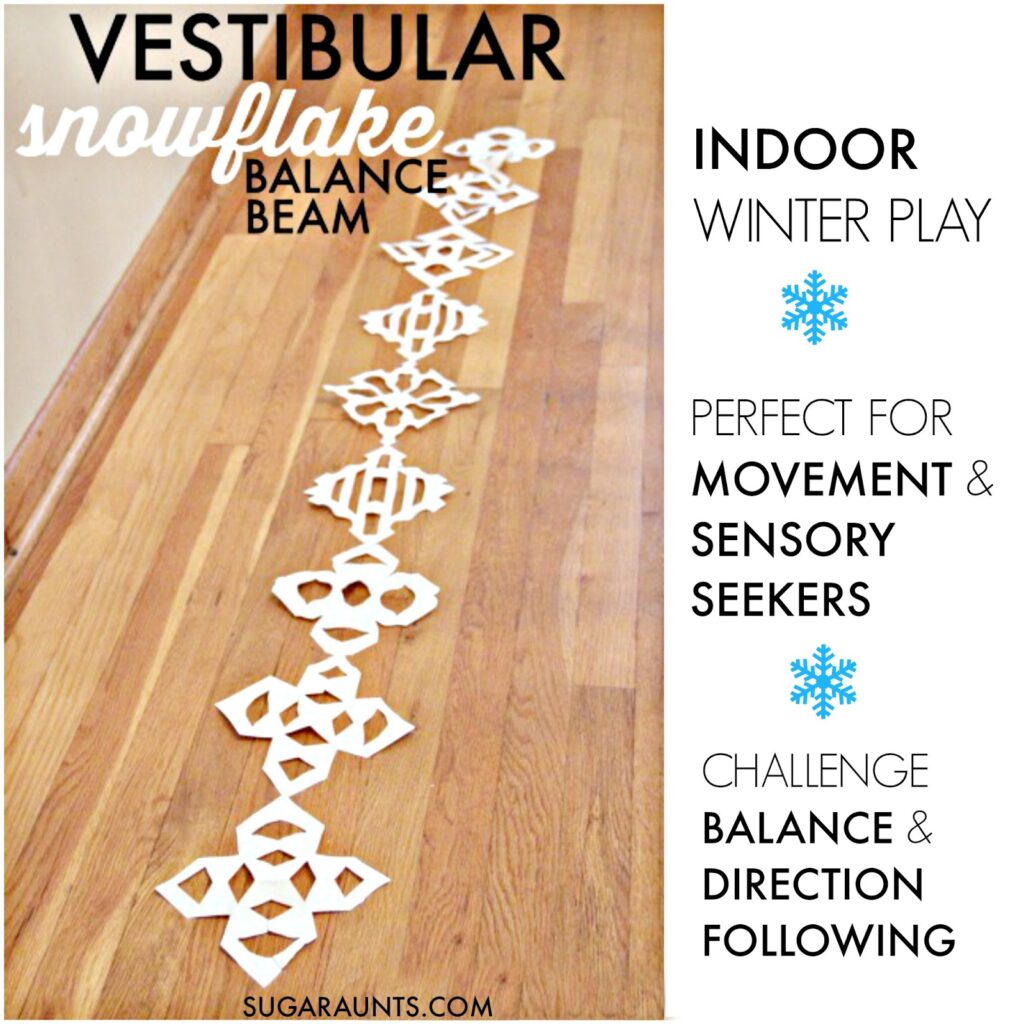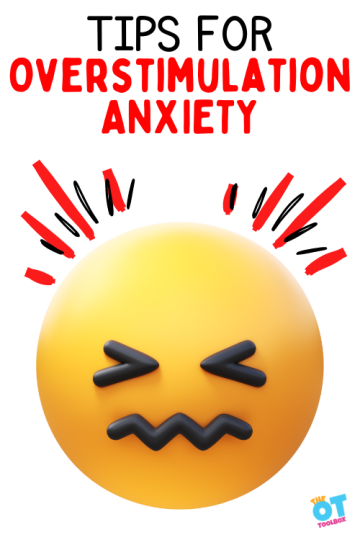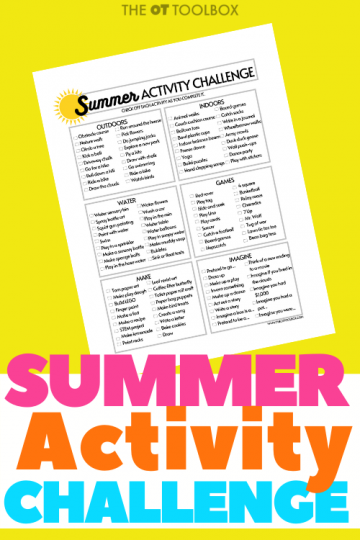When the weather is too cold to go outdoors and the kids are bouncing off the walls, you sometimes need to get creative. Maybe you’ve got a few Occupational Therapy students who would benefit from a vestibular movement activity like this snowflake balance beam! This is a great indoor gross motor activity for preschool or older ages.
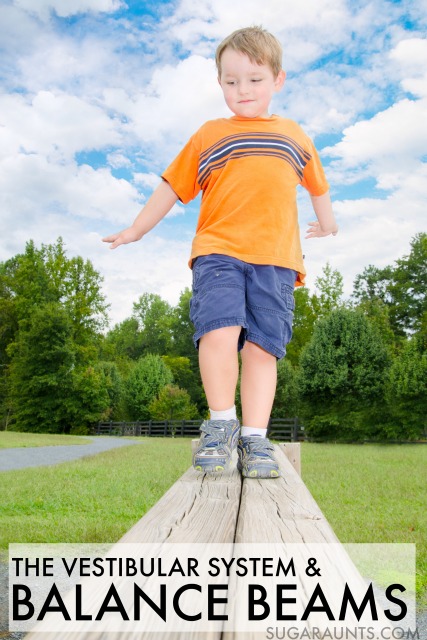
Balance Beams and the Vestibular System
Balance beams are perfect to address needs in the vestibular system. Our body’s ability to regulate position in space helps us to manage obstacles in our path without losing balance. The vestibular system allows us to move in space without falling or without making us thing we will fall (gravitational insecurity).
We’re able to take in visual information, process it, and respond accordingly…all with the help of the vestibular system!
When there is a problem in the vestibular system, a child may appear clumsy, running into objects or people, have trouble with visual tracking, attention in reading and writing, difficulty focusing on a task, and trouble with motor planning in coordinated activities that a child needs to do throughout their day.
Balance beams are a great way to practice and work on vestibular sensory integration into functional activities. A child can work on balance and motor planning as they visually scan their balance beam and track the line they need to walk along.
Balance beams challenge the vestibular system with variances in difficulty. The great thing about this snowflake balance beam is that you can adjust the size and provide many, many alternate activities to work on coordination, listening, motor planning, direction following, and attention.
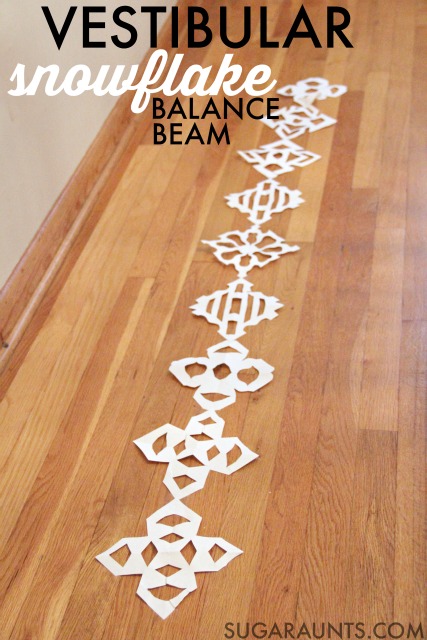
Snowflake Winter Balance Beam: Making therapy fun!
This post contains affiliate links.
Cut snowflakes from paper and place them around the room. Get the kids in on the snowflake cutting for seasonal scissor skill work!
Using double sided tape
, create a balance beam on the with the snowflakes. Arrange them in a line along the floor. It can be a simple strait line or a multi-angled balance beam track. Ask your child to walk along the snowflake line without falling off.
Other balance beam activities that challenge the vestibular system:
- Walking on tip to
- Walking toe-to-heel
- Hopping on one foot
- Jumping
- Walking sideways
- Walking backwards
- Crawling
- Walking with feet and hands. Encourage direction-following and listening skills by calling out different ways to walk along the snowflake balance beam.
- Toss a ball to your child as they are on the balance beam.
- Ask your child to change directions as they walk along the beam.
- Have the child look up at the wall and not down at their feet as they walk.
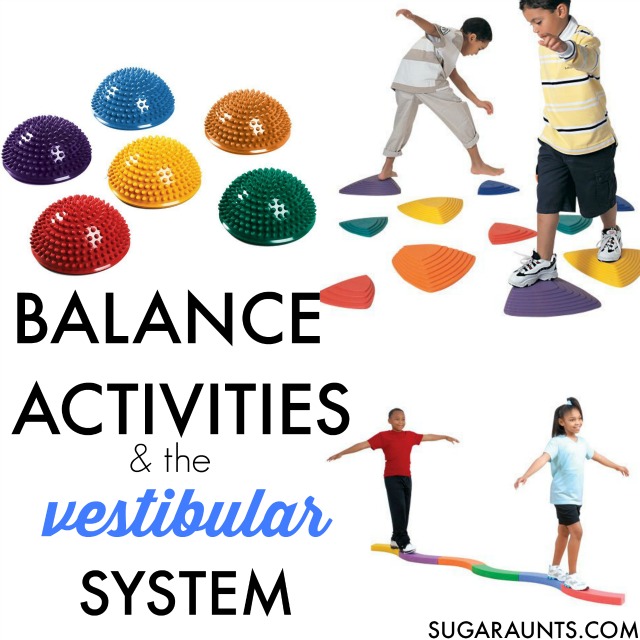
This Folding Beam is great for storage concerns. Add creative balance beam activities like transferring items from a bucket at one end to a bucket at the other end.
Balance Pods can be positioned in any room or activity. Encourage big and little steps by spacing them closely and further apart.
Gonge Riverstones are a great challenge to the vestibular system with various sloped sides.
Stepping Buckets Balance challenge motor planning. Place obsitcals in between the buckets for more visual tracking while working on vestibular sensory integration.
The BSN Gymnastics Curve-A-Beam can be reconfigured in curved patterns.

